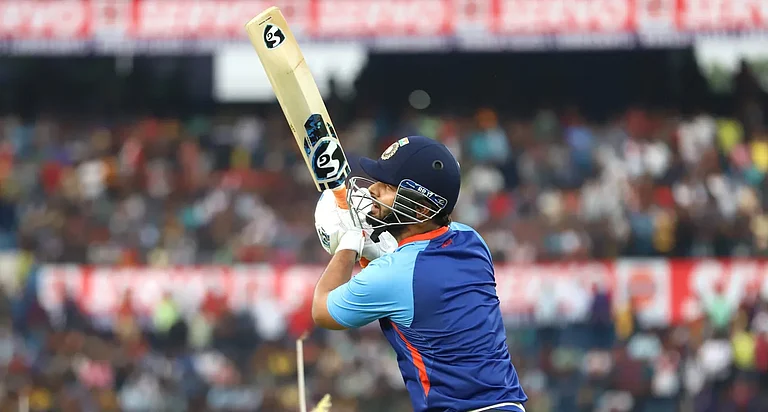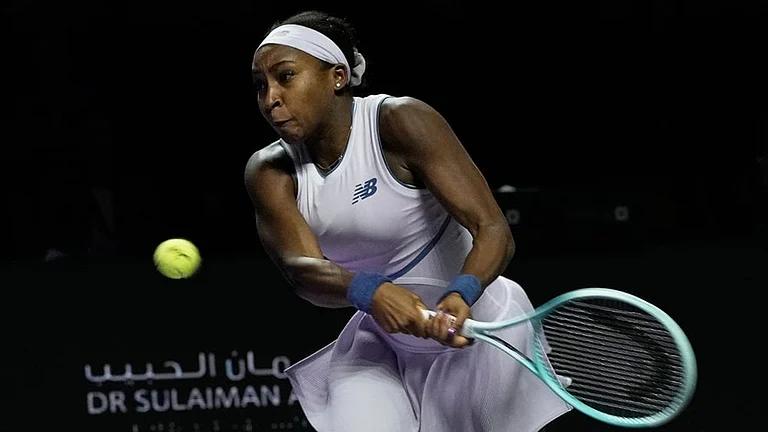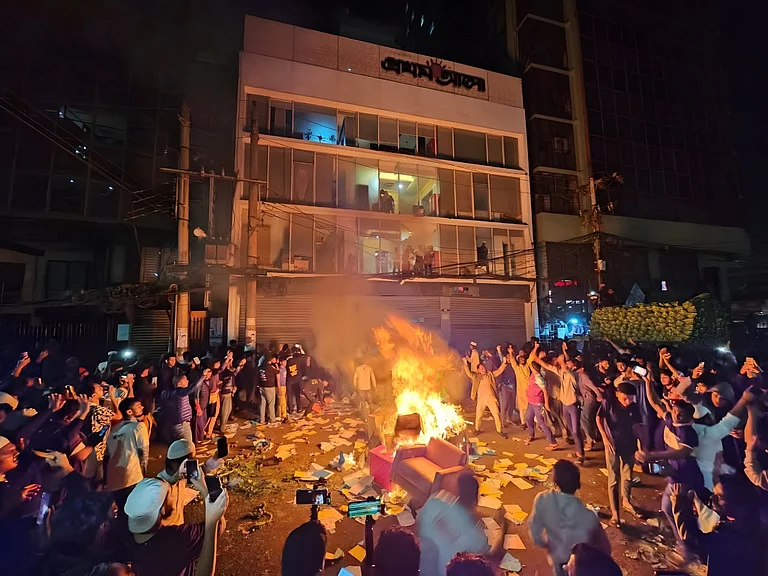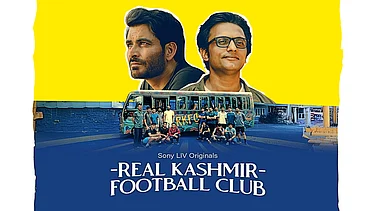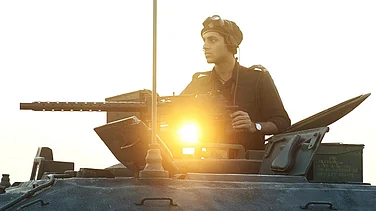“Entertainment. Entertainment. Entertainment,” Vidya Balan famously said on celluloid, succinctly capturing the desire of the audience. And employed in the pursuit of this chimerical phenomenon are lakhs of Indians who have collectively been producing more movies annually than anywhere else in the world. With the proliferation of television channels in the 1990s, the demand for content grew manifold, and saas-bahu dramas, comedy sit-coms and reality shows ruled the roost. Each channel catered to its audience in a particular language and viewing was at an appointed hour, primarily at home and mostly together with the entire family.
With the growth of technological infrastructure in the 2000s, the world slowly shrunk to fit into the palm of the consumer’s hand. Stories of platforms like Netflix, Amazon, HBO and Hulu streaming high quality content internationally did the rounds in India. And what’s more, the viewing was at the discretion of the customer... anytime, anywhere! Naturally, the Indian consumer also wanted more.
And with drums rolling, the OTT (over-the-top) media market in India was born. Amazon, Netflix, Hotstar, ALT Balaji, SonyLIV, Zee5 and MX Player followed each other in quick succession to capitalise on a demanding Indian market. Suddenly, Indian audiences had the opportunity to watch content in regional and international languages with unknown heroes and heroines. And the viewers lapped it all up. Because the stories worked! And thereby came into force, the alliterative holy trinity of ‘Consumer. Content. Creator.’ For in a world where consumer was always king, content became king, and ipso facto, the creator became king.
But while the existing creators made hay in the shining sun of increased demand, their output was not enough to satisfy the appetite of the ever-hungry audience. Add to that the pandemic, and all existing content was devoured as soon as it was presented. Streaming platforms, seeking more, started to look towards existing material.
That is when mining began for the golden works of published, regional authors who were hitherto known primarily only to their local readers. That is not to say that published works had not been adapted earlier. Television has had a rich tradition of adapting mythology (Ramayan/Mahabharat), history (Akbar-Birbal/Tenali Raman), literature (Sharad Joshi, Munshi Premchand, Taarak Mehta) and more. In fact, Netflix India’s launch was based on Sacred Games, Vikram Chandra’s famous tome. Works of Vikram Seth, Salman Rushdie, Jhumpa Lahiri, Satyajit Ray and others have also been adapted. Scam 1992: The Harshad Mehta Story, based on Debashis Basu and Sucheta Dalal’s book, The Scam, was a hugely popular show on SonyLIV. But these adaptations were mostly of works by Indians authors writing in English and having an international presence. With a growing demand for locally relevant material, works of regional authors came into focus. While India, with its rich culture of story-telling had such works in abundance, there were challenges faced by the platforms. Inundated with pitches, overworked platform executives did not have the time to scour through the wealth of stories to handpick from. Besides, the habit of reading books was also not necessarily prevalent amongst the decision makers. Add to this the language barrier that limited their exposure.
Therefore, everyone realised that working with a finished text that was already in existence was the best bet going forward because it brought everyone onto the same page in the shortest possible time. All the stakeholders—platforms, producers, content curators, even directors and actors—knew of the raw material that they were working with. It brought clarity by doing away with a lot of vision variance that is inevitable in the case of an original story.
However, once all these hurdles were crossed, there still remained a huge stumbling block. While the published story per se was available, it still had to be presented in a consumer-friendly manner. It had to engage and entertain the fickle viewer. Even though the original story worked as a base, it still needed to be adapted to meet the expectations of the audience successfully.
Stephen King famously said, ‘Books and movies are like apples and oranges. They’re both fruit but taste completely different.’ A screenplay follows very different rules from that of a novel. The challenge in adapting a novel for the screen lies in staying true to the source text as one proceeds to bend it for an audio-visual medium. Also, each medium has its own requirements.
For instance, important to screenwriting is the element of surprise. The twists and turns of the plot, the unpredictability therein and the characters within are devices that hold the attention of the viewer. The audience of a feature film is more patient in that they allow for the story to unfold over time. In TV and OTT media, however, a ‘cliffhanger’ or an emotional ‘hook’ at the end of each episode is desirable because it makes the viewer curious, making them want to watch more. These elements are not always present in a novel.
Moreover, to adapt the novel into a screenplay, one has to think of a series of scenes in three dimensions. The many events happening inside a character’s head in the book need to be re-told using pictures, sound, music and dialogues for the screen.
In some cases, there might be a need to change the timeline as well.
A case in point is the 2021 drama series, Grahan, streaming on Disney Hotstar. The series is based on Chaurasi, a beautiful Hindi novel written by Satya Vyas. Chaurasi, meaning eighty-four, narrates a tragic love story set against the backdrop of the 1984 anti-Sikh genocide in Bokaro, Jharkhand, one of the cities worst impacted by the riots. While everyone involved was certain that it was a story that needed to be told, especially to the younger audience who formed a major chunk of OTT media viewers, the question before the creators was, ‘how do we make it relevant and interesting for today’s audience?’
The obvious conclusion was that it needed to start from the familiar—from a world that the audience can relate to so that they get sufficiently invested in the characters before travelling back into the past of these characters to empathise with them.
The writers of Grahan decided to begin the story in 2016, close to the present day. This meant that our protagonists of 1984 had to exist thirty years hence. That one decision made it necessary to come up with an entirely new story track that will take place some 30 years later than the events of the novel. This brought forth a fresh set of questions:
- What had been the journeys of the characters from the novel in the ensuing thirty years since 1984?
- Where were they now?
- How were they dealing with the tragedy that they had become a part of?
- Who were the new characters? How were they linked to the original ones?
To make the track interesting, there had to be intrigue, as the ghosts of the past visited each of the surviving characters. And to ensure unpredictability, as the past unravelled, each character had to necessarily have undergone an emotional graph which was different from the other—so, while Rishi, the rioting male protagonist, becomes a Sikh single-parent leading a quiet life, Manu, the female Sikh protagonist moves abroad, having buried the events of the past (but only until the past intrudes her present.) Chunnu, the antagonist, having discovered the recipe for political success, once again tries to incite communal violence for greater success.
However, if the actors of the past wished to erase 1984 from their memories, there needed to be someone in the present who would have to exhume forgotten events.
A police officer or a journalist as the sutradhar narrating the events would be an obvious choice. But that would merely be an objective, investigative process, rather than an emotionally-charged one, which is more desirable to make for an involved viewing. Therefore, the new characters had to be in conflict with the old ones. And they needed to have their own issues. After a struggle of more than a year and multiple failed attempts at adapting the story, the story-writers had their Eureka! moment, and Grahan’s bedrock emerged.
The world of a loving father-daughter duo starts to fall apart when the daughter—a police officer—discovers that her Sikh father was an active participant in the Bokaro Sikh-genocide. As she tries to unearth the truth for his safety and her sanity, the father continues to lie to waylay her, to prevent her from discovering his secrets.
But cracking the premise was just the first step.
The ambition was to present the series in a thriller format without losing the emotional angle. Which meant every scene, every word and every character motivation had to be worked through under a fine lens to write an 8-episode series with a total running time of 350-400 minutes.
Adaptation begins with adoption. If the original writer were Devki, the adaptors are the Yashodas who raise Krishna. A good adaptation needs responsibility from screenwriters when they are handling someone else’s creation and the trust of the original author that the adaptors mean well. One needs to protect the soul of the original creation while doing everything to nourish and nurture it for the new environment.
A constant dilemma of the writing process was finding a balance between the original novel and the new track. Chaurasi, the novel, had such vividly beautiful scenes that one wanted to retain as much of it as possible, and yet, one could not ignore the movement of the present characters.
The novel is about Rishi and Manu’s love story and what happens to it when the terrible events unfold. Grahan is about Rishi’s daughter, Amrita’s journey to find the truth about her father, some 30 years later from where the novel ends. Everything in Amrita’s story is new and yet everything is connected to Rishi and Manu’s love story and what happened with them in 1984. The writers of Grahan took the core of the story that Satya Vyas had written in Chaurasi and extended it. The core of Chaurasi was love. The writers of Grahan used love as the base—Rishi and Manu’s man-woman love transcends decades to flower in the father-daughter love of Gursevak (who actually is Rishi, 30 years later) and Amrita.
But creating the drama for the screen entailed major drama behind the scenes in the writers’ room: during the development of the story, while transforming it into a screenplay and then proceeding to the dialogue draft—at every stage, there was conflict amongst the writers. Whether it was about the content of the scenes, structure of the episodes or the events/revelations of intent, everything was arrived at after much debate, and oftentimes, near-murderous arguments. That we all survived the process and are continuing to work together is testimony to the passion, love and respect we have for each other’s craft.
But throughout the process, there was one thing common in all our hearts: we believed that Chaurasi was a precious gem in our hands and we had to do our collective best to polish it before presenting to the world. The love and critical acclaim that Grahan received has propelled us to look a little deeper, work a little harder in today’s era of India’s content gold rush to explore and dig out the goldmine of stories waiting to be told.







